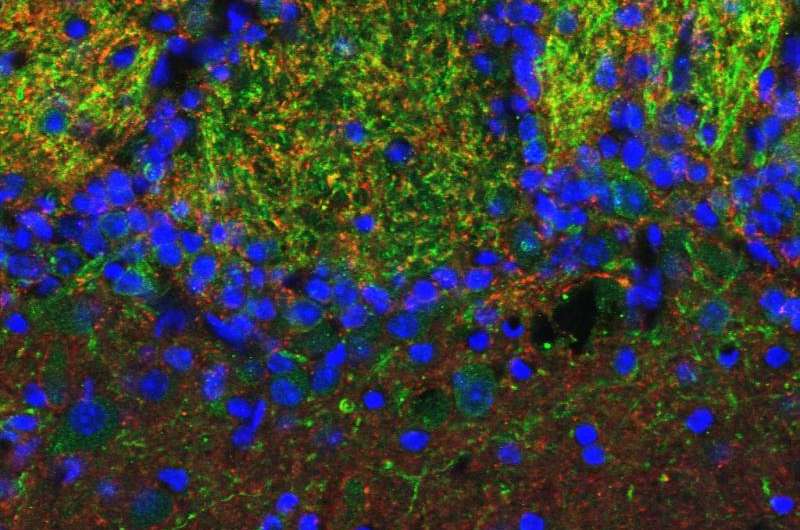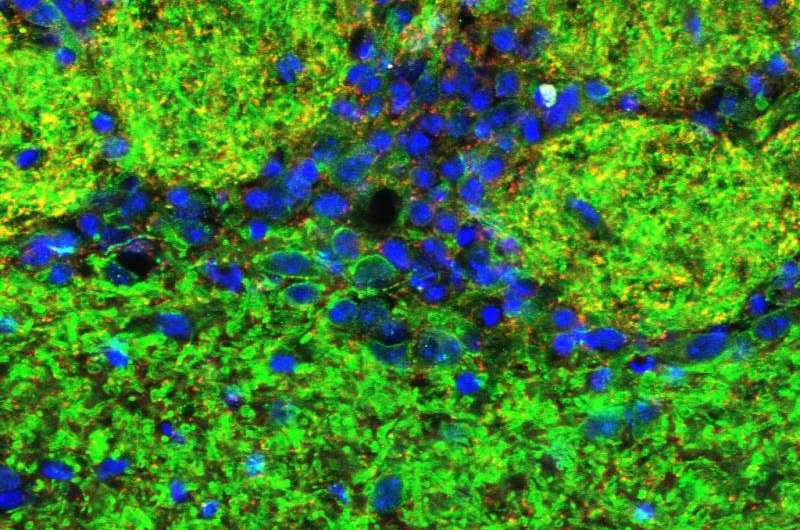A 'time switch' in the brain improves sense of smell

When the brain processes olfactory stimuli, it differentiates between similar smells using subtly modulated signals. Brain examinations and behavioral studies in mice have now shown that neurons with inhibiting characteristics play a key role in this process.
Smells are a vital part of daily life: bad odors warn us off rotten food, and the aroma of a tasty meal stimulates salivation and digestion. Our sense of smell is closely linked to our autonomic nervous system, which controls the unconscious functions in our bodies as well as affecting our emotions.
A team led by Prof. Thomas J. Jentsch and postdoctoral researcher Kathrin Gödde of the Leibniz Institute for Molecular Pharmacology (FMP) and the Max Delbrück Center for Molecular Medicine in the Helmholtz Association (MDC) collaborated with Swiss colleagues from the University of Geneva to find out more about this key aspect of perception.
The scientists wanted to find out how similar scents are differentiated – how our sense of smell is so finely tuned. A single note in the complex mixture of odors that make up the smell of fresh fish can reveal whether it is still edible, for example. At the core of sensory perception are the odor molecules in the smells that we inhale.
Like a key in a lock, an odor molecule fits to the receptor on the surface of the sensory cells in the olfactory mucosa. Stimulation causes these olfactory cells to send signals to the brain's olfactory bulb, where mitral and tufted cells (M/T cells) process them and forward them to other areas of the brain in a kind of Morse code.

Each olfactory cell carries only one kind of receptor, which is specific to particular odor molecules and is hard wired to one region in the olfactory bulb. In this way, a spatial signature for a smell is generated in the olfactory bulb. However, the team of scientists showed that to represent the very small differences between smells, time-dependent coding is also essential.
We can differentiate between similar odor molecules because of a subtle modulation in the sequence of signals in the Morse code; the formerly synchronous cells sending the codes are thrown out of step. Each odor therefore has an individual, time-dependent signal pattern. Up to now, scientists had assumed that inhibiting signals delivered to the M/T cells change their state of excitation, which in turn influences the temporal sequence of the Morse codes and help discriminate similar odors. The hypothesis was still ambiguous and was the object of the research team's study.
The scientists reduced the inhibiting signals that the M/T cells received from neighboring cells in the olfactory bulbs of mice by genetically deactivating the ion transporter Kcc2 in specifically these kinds of cells. This severely changed the electrical balance of the M/T cells, meaning that they virtually ceased to receive any inhibiting signals.
In the behavioral tests, the mice that had been genetically altered in this way could still differentiate between odor molecules that were clearly different – the inhibiting signals therefore appear to have no influence on the general ability to smell. Yet the mice were no longer able to distinguish between odor mixtures with slightly different ratios of the same odors. In addition, they could not differentiate between molecules that are very similar in their chemical structure such as (+) limonene (lemon scent) and (–) limonene (turpentine scent).
The researchers in Geneva provided an explanation for this phenomenon. They studied the electrical characteristics of the M/T cells in living mice. When the inhibiting signals acting on M/T cells were suppressed, the neurons were more strongly excited and in addition the creation of the Morse code for different smells was impaired. As a result, the odor-specific signatures were more similar and thus more difficult to distinguish.
Kathrin Gödde says: "Our results prove that time-dependent pattern formation in the signals of M/T cells, with the help of neuronal inhibition, is extremely important for differently representing similar odors in the brain and thereby for discrimination between them. This is the first time this has been shown with such clarity."
More information: Disruption of Kcc2-dependent inhibition of olfactory bulb output neurons suggests its importance in odour discrimination. Nature Communications (2016).
















